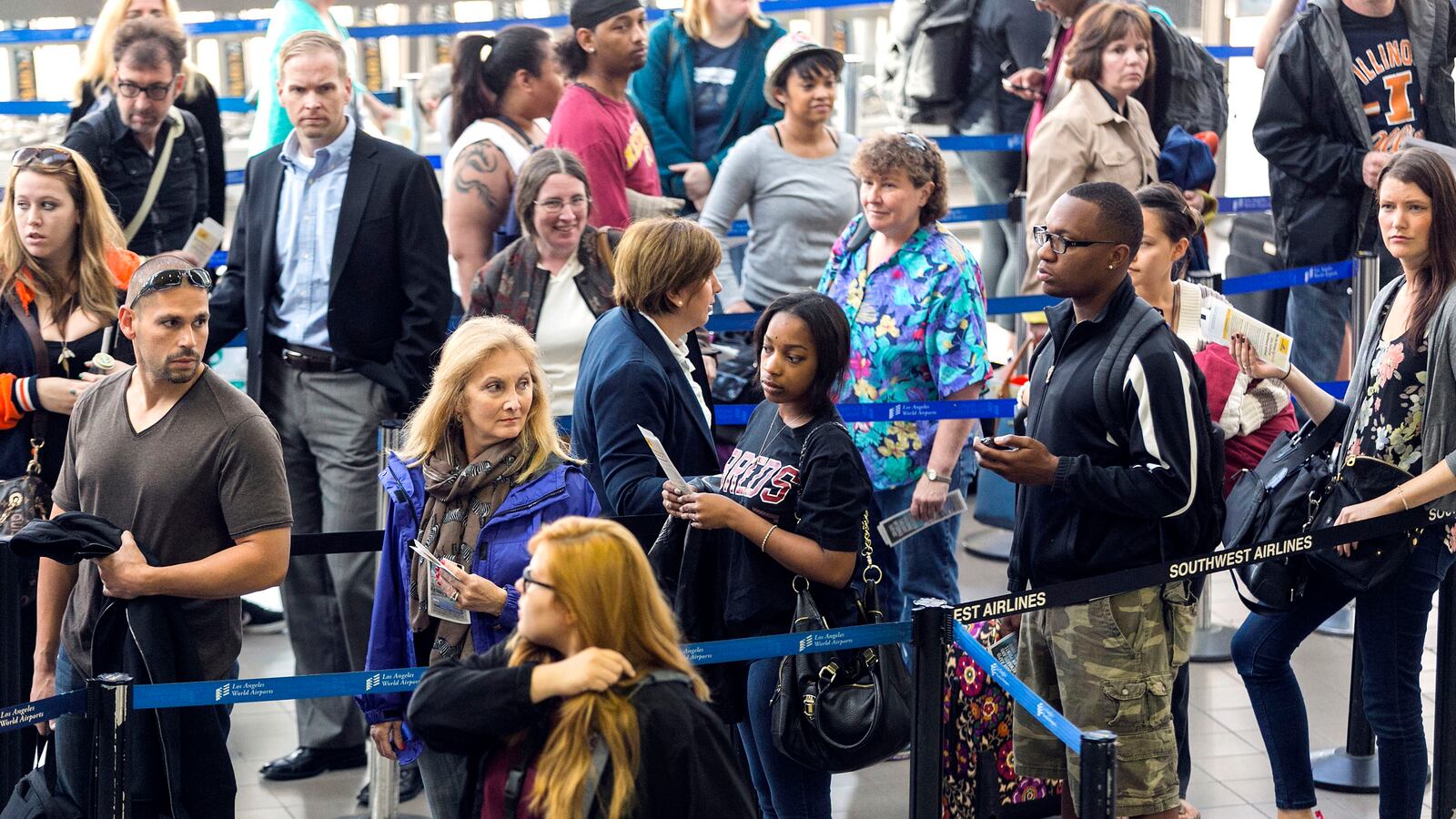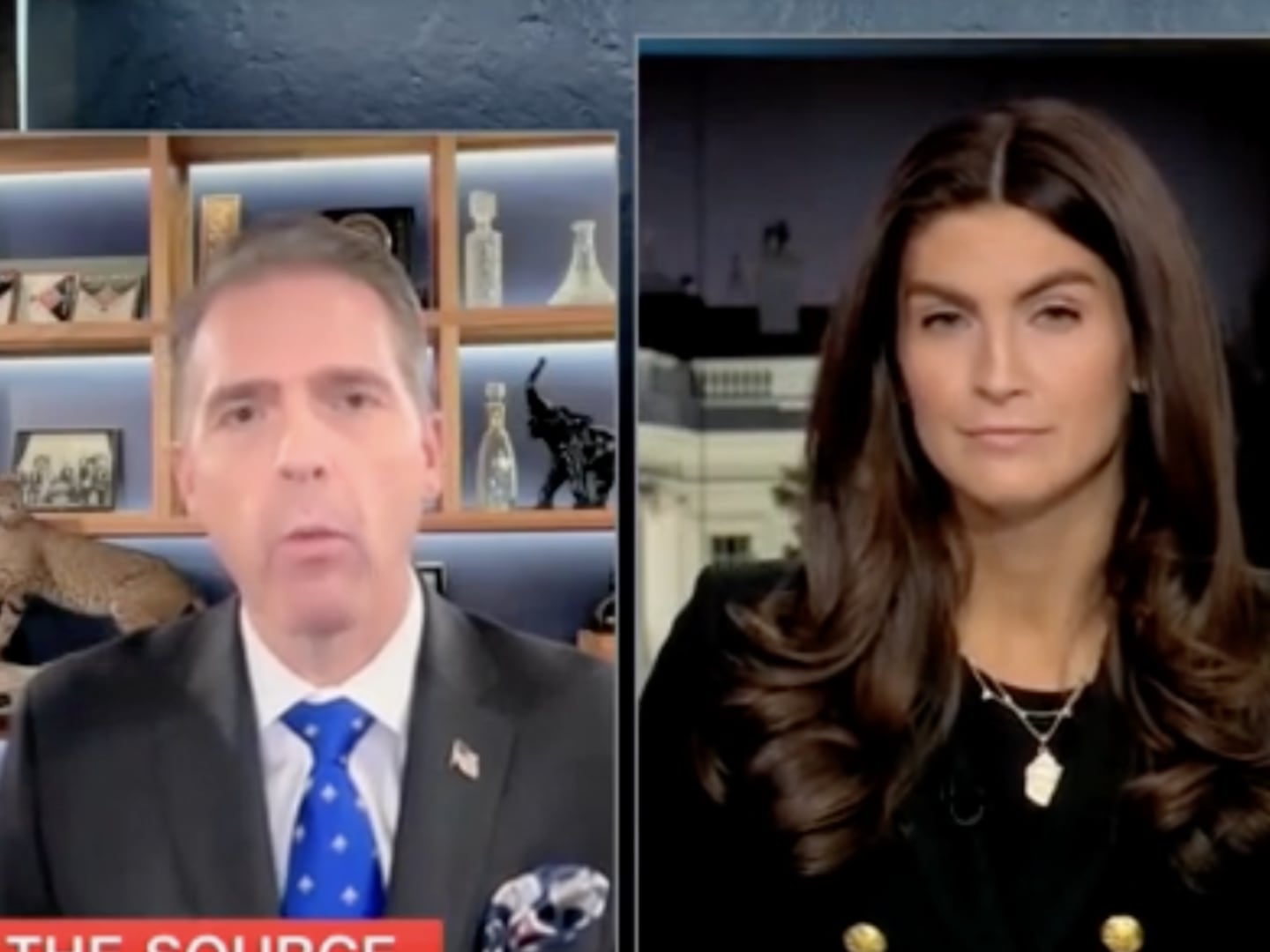When I landed in Los Angeles this past Sunday evening, the terminal had the look and feel you'd expect during a snowstorm: long, sullen faces, unusually heavy crowds, agents rushing around in an obvious state of fluster. The departure screens were striped with red: CANCELED, CANCELED, CANCELED. But outside it was in the high 60s and balmy.

Welcome to the wequester. Mandatory budget cuts are kicking in. The FAA has been forced to furlough hundreds of controllers—up to 10 percent of its tower and en route radar facility staff—and the nation's airline passengers are feeling it.
At first, it seemed the cuts would only affect smaller, outlying airports served mainly by general aviation traffic and a smattering of regional jets. But this was LAX, and the story was similar at major airports nationwide.
The following afternoon, my outbound departure was delayed for more than an hour. When I approached the podium for a look at the preflight paperwork, the agent handed me a printout: GROUND DELAY DUE TO FAA STAFFING SHORTAGE.
The traveling public is caught up in a political squabble. Passengers have become pawns, basically, in a cynical game of stalemate.
The airlines, too, are caught in the middle. Industry leaders are livid, and who can blame them? The trickle-down effects of a single canceled flight can wind up costing a carrier hundreds of thousands of dollars.
I can't imagine this crisis will last very long—unless perhaps Congress is intent on bankrupting the country's airlines and making tens of millions of citizens even angrier than they already are—but that doesn't make it any more acceptable.
What a peculiarly American episode of incompetence and irresponsibility: can you see such a thing ever happening in Europe or Asia, where governments are quick to recognize how vital commercial air travel is to their economies? Our leaders don't seem to understand, or don't seem to care, how much the country stands to lose through long delays and cancellations: the tens of millions of dollars in lost productivity and wasted time every day.
In a sense, this is just another depressing example of America's long slide into infrastructural obsolescence, brought on by a government so mired in absurd partisan gridlock that the country's best interests are no longer important. Our roads, bridges, railways and public buildings are falling apart. If you question this portrayal, compare for a moment the airports in New York, Chicago, and Los Angeles with those of Seoul, Hong Kong, Munich, and Singapore.
You mean to tell me that the government couldn't reallocate a tiny fraction of the mandated cuts—less than 2 percent by some estimates—to keep something as critical as our air-transport system running at a normal pace? Earlier this year, Congress intervened to prevent the furlough of USDA meat inspectors, allocating $55 million from elsewhere in the budget.
How this all came to be is something that I, and many others, don't quite understand. The FAA is supposed to be funded by dedicated user fees. Airline tickets are more heavily taxed than almost any other product in the U.S. economy, and it's those taxes and fees, supposedly—not the general treasury—that keep the air-traffic control system up and running. That money is available, apparently, but the way the sequester was written, it cannot be used as intended.
As for travel advice, the best I can offer is simple common sense: check with your airline before heading to the airport. There's also information on the FAA's website.
Things will be unpredictable. It's difficult to say which individual airports will, on a given day, be prone to slowdowns. And the causes of a particular delay will be similarly hard to pinpoint; they may or may not have anything to do with the sequester. Those "normal" weather and traffic delays haven't gone away, of course, and in many cases will be compounded by the staffing crisis. Flying out of LAX on Monday, the message we got from air-traffic control referenced the personnel shortage specifically, but in many cases it'll be a mix of factors. Your flight might be late because of the sequester, because of the weather, or perhaps both—or neither.
For instance, at La Guardia on Tuesday afternoon, dozens of flights (mostly regional jet departures) were canceled, and delays were up to two hours long. But the weather was terrible, with low ceilings and reduced visibility. To what extent the trouble could be blamed on staffing is difficult to determine.
A shame all around. Airline on-time performance had been improving, too, with 84 percent of flights landing within 15 minutes of scheduled arrival time.
If you want to send a message to President Obama, the Department of Transportation, the FAA, and Congress, visit DontGroundAmerica.com and ask them to work together to get controllers back on the job.
UPDATE: Late in the day April 25, the Senate unanimously passed legislation that would end the FAA controller furloughs and restore the nation's air-traffic-control system to normal, or close to normal operation. The measure permits the shifting of over $200 million from elsewhere in the federal budget to cover the required funding. The Dependable Air Service Act now moves to the House of Representatives, where it is expected to be taken up as soon as Friday.
This should put a quick end to the delays and cancellations that have been plaguing the country's airports since last weekend. According to the FAA, roughly 1,000 commercial flights each day were in some way affected by the sequester-induced furloughs, with many delays lasting several hours.






